Out of the 7.7 billion people in this world, there are only about 135 people who look like you. And even they have their differences from you. All of us come in so many different sizes and shapes. But still, the fashion industry has managed to make clothes for all of us like that best fitting pants you own, that seems as if they have custom fitted you. They know something you don’t! What is it?
I will try to disassemble the 3 ingredients in fitting pants that all the big brands use – Pant cut, rise & fit. These are the general guidelines that they use to categorize pants. Adding to this, a knowledge of your own body measurements, specifically your waist measurements and inseam length means that you are on your way to get the best pants you want.
Pant rise
This refers to the distance between the bottom of the crotch of the pants and the top of the waistband. This tells you how high or low your pants will sit on your waist. Generally, it is between a range of 7 inches to 12 inches, and they make such a difference to the way pants fit.
1.High rise waist
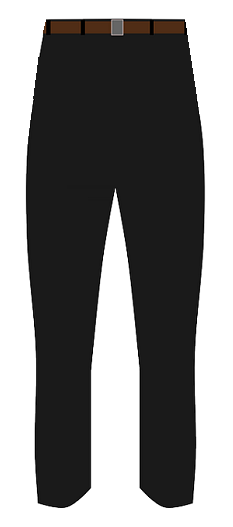
In this style of pants, the waistband will sit way above the navel and fastens at or above the narrowest part of the waist. If you want a long body or the look of longer legs this style is the one for you. The high waist look of the pants will make the legs look longer. But then fashion dictates what you wear and not wear.
2.Natural Waist
This is a style where the waistband is placed at or just above the navel. This style is more prevalent in women’s pants.
3 Medium rise waist
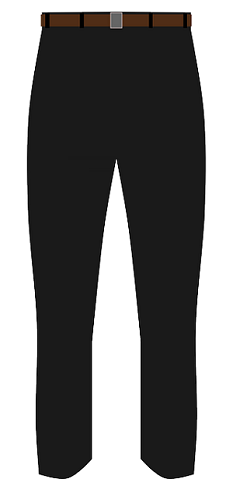
This is a pant style where the waistband rests just below the navel. A medium rise waist is usually what you see favored in men’s suit pants and dress pants.
4 Low rise waist
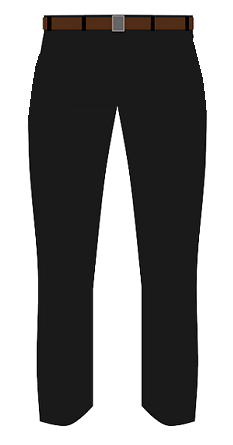
In this pant style, the waistband will be placed way below the navel, you can say even about 3-4” below your navel.
This is a very popular pant style for jeans, but one that is the most misused. Low rise does not give off any right to show your butt to others, but some ignore this and there goes the good name of low rise pants.
Pant Cut
This refers to the shape or length of pants’ legs.
5 Straight leg
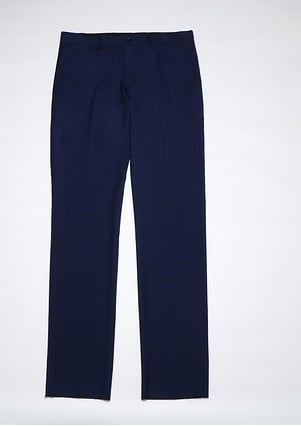
Straight leg style of pants has the same width from knee to ankle. The leg openings are meant to fit over boots.
6 Tapered Leg
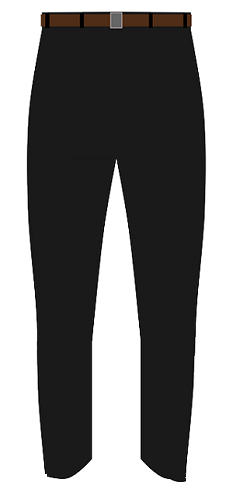
These are pants which are cut so that they are increasingly narrow from hip to ankle. Cigarette pants are examples. It can make your legs look longer and consequently make you look taller. This is a good style for petite build.
7 Bootcut Pant style
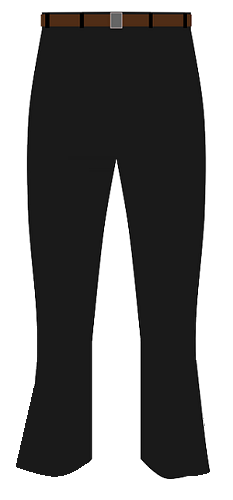
This pant style has a slight flare to its legs starting from mid-calf which makes its leg opening slightly wider than for the straight leg pants.
If you have a wider upper body (aka apple body shape or inverted triangle body shape) these pants style can balance your look and make you look better proportioned. This is true for both men and women.
8 Flared pants / wide leg

Flared pant styles have a wide leg opening with the flare starting just below the knee. The hem circumference can even go up to 19 inches.
9 Cropped Pants style
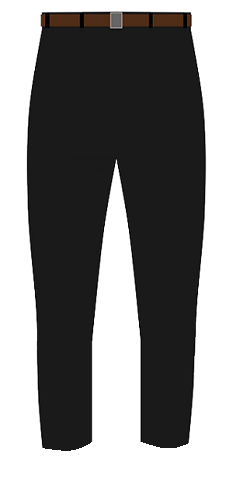
These are pants which end above the ankle – Capri pants end between the knee and mid-calf; Cropped pants for men end between mid-calf and ankle.
Pant Fit
This refers to how the pant fit the body of the wearer – will it be tight or loose etc.
10 Relaxed Fit
This is a pant style that has a generous fit – you have extra ease around the hips and thighs for easy movement. Suit pants usually have a relaxed fit. Boyfriend style pants are women’s pants with this type of relaxed fit.
11 Classic Fit
This is the most popular fitting style which has an average fit along all parts of the body – waist, thighs, hips and legs. It can be said to be the most comfortable fit for that size. Your dress pants will usually be selected in a classic fit.
12 Slim Fit
Slim-fit pant style refers to a snug fit. This is the most flattering style which suits almost all body types.
13 Skinny fit
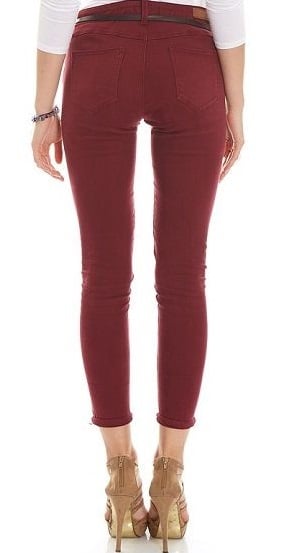
Skinny fit style means it is very tight fitting so as to hug the body on all areas – waist, hips, thighs and hem.
14 Inseam length
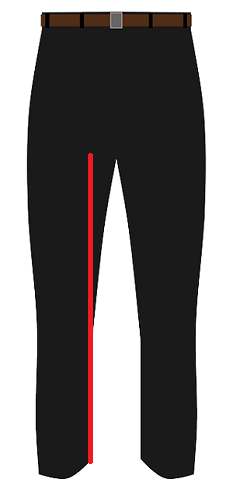
The Inseam length is how you measure the length of a pant – it is the Measure from the crotch to the hem. On your body, it is the measure from the top of the interior leg to the bottom of the ankle.
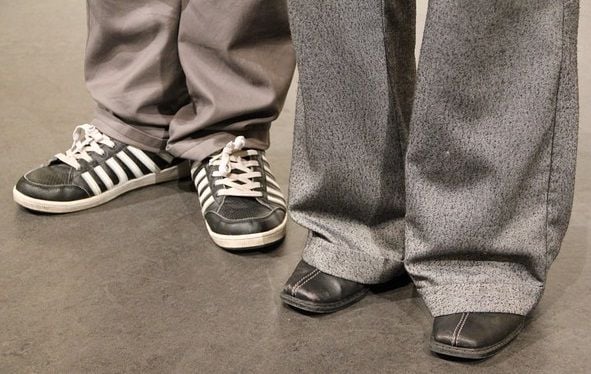
If the length of your pants is not right it can make you look sloppy with all that extra material bunched up below the knee. The General rule is that the hem should touch your shoe, but not cover it and graze the shoelace.
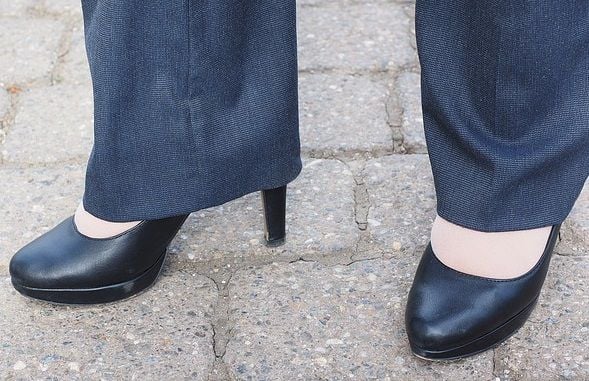
Professionals talk about the right length by referring to the horizontal crease that sits on your shoe as a full break, medium break etc. This is mostly a personal preference but a medium break with the pant falling midway between the top of your shoe and the top of the sole is the conservative choice of most people.
But sometimes some extra length is preferred, like when you want to roll up the hem of your jeans.
15 Waist measurement
One of the most important rules in finding a pant that fits you is to find one with a waistband that is just right fitting – that sounds an understatement but when you see the number of people wearing pants that do not fit at the waist, this does not sound out of place.
You should not need a belt to hold your waist up there nor should it be so tight that it cuts off your circulation. One of the most glaring signs of a pant that is too tight is a ‘pocket flare’ – this refers to the pocket gaping and not lying flat on the body. If you want some room there, go for a pant with pleats.
You should be measuring your body waist ( where you normally wear your pants) without pants or belt, to know your own measurements. If you are wearing pants when measuring, subtract 1″ from the measurement.
When the Persians came up with ‘the pants’ so long ago, no one would have imagined that all the people in the world would one day be wearing this in one form or the other. Now, not one wardrobe is complete without a pant. Finding a pant that fits is a lifelong mission for some. And those who have found it, know that the secret is not a secret after all.
Related post: 15 different parts of jeans that make it an iconic garment: An overview of the anatomy of jeans.; 45 Different types of Jeans
Interesting reading: “Don’t expose your socks or your belly” says this article Men’s waistbands have risen and fallen through history.

Great read Id like to know how to fit a flat bottom, thick waist and long thin legs I’ve been trying for fifty years and still haven’t got it right
As an add on to my last note the rippling effect occurs on both sides of the front leg as it relates to men’s pants
My biggest issue is…..for men’s pants – the knee binding effect (visual rippling of the front thigh section from the inside knee to the inseam) for Top garments its the binding at the front of the shoulders. Most store bought and most tailored made are built in this way, these days. At least the place that I have been to. I know its not a riser issue (front or back) Still trying to figure it out what the issue is. Maybe its the shape of the “J” cut on either the front quarter, back quarter or both.
Very informative blog on so many aspects of sewing/fitting, etc; I’ve only just started reading. Thank you.
Thank you, that was very useful to know.